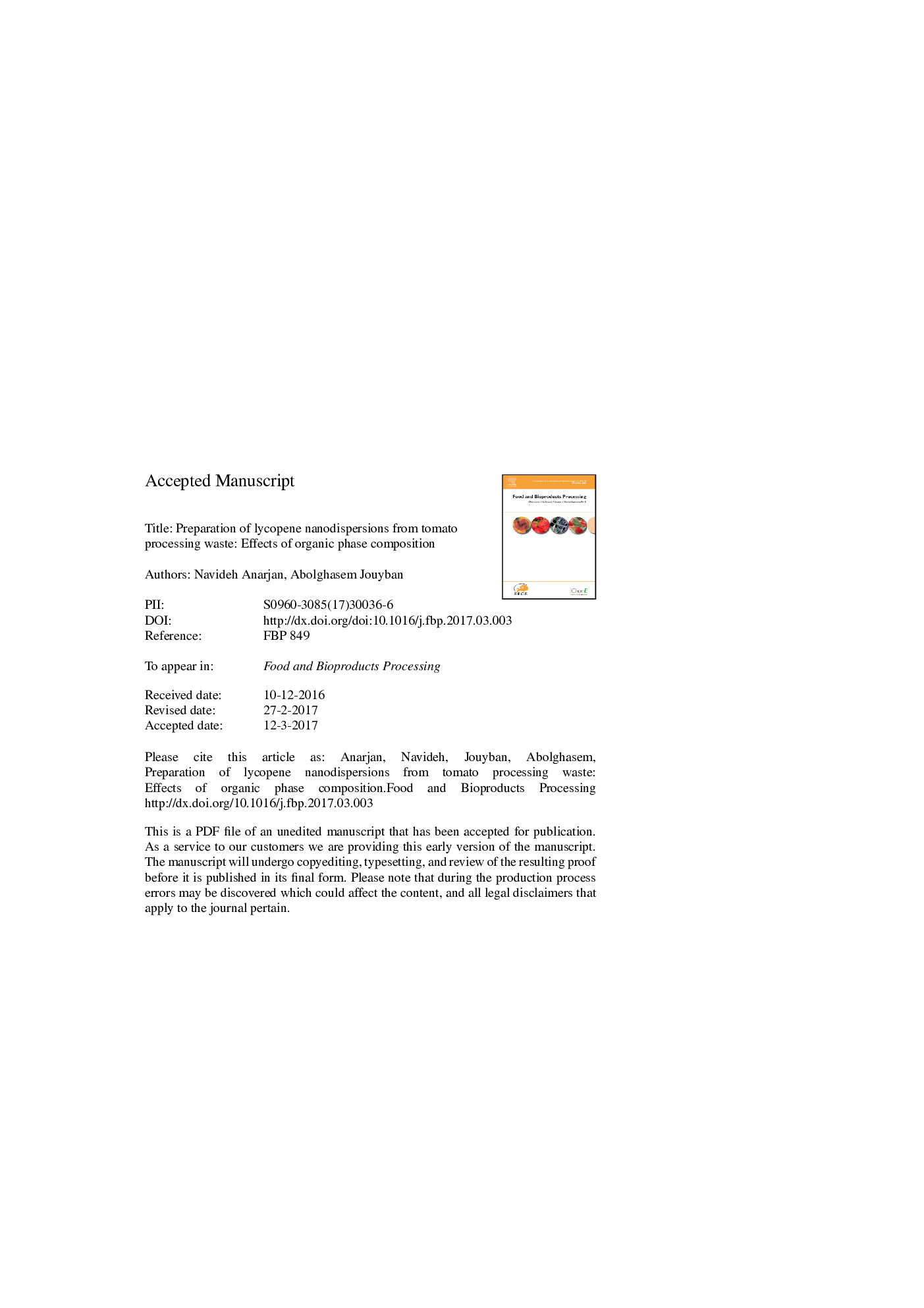| Article ID | Journal | Published Year | Pages | File Type |
|---|---|---|---|---|
| 4752998 | Food and Bioproducts Processing | 2017 | 32 Pages |
Abstract
Lycopene was extracted from tomato processing wastes and its size was decreased into nano-ranges using an ultrasound assisted nano-precipitation technique. A simplex centroid mixture design was applied to investigate the interactions between three selected solvents, with totally polar, semi polar and non-polar natures, namely, acetone, ethyl acetate and hexane, respectively, in either extraction or size reduction steps. Full cubic regression models with adequate determination of coefficients (>92%) were attained for mean particle size, size distribution and lycopene content variations of produced nanoparticles, as selected response variables. The numerical multiple-response optimization suggested that the organic phase with 31% (v/v) acetone, 38% (v/v) ethyl acetate and 31% (v/v) hexane yielded the best lycopene nanoparticles with the particle size of 73.5 nm (minimum), size distribution of 0.11 (PDI, minimum), and lycopene content of 7615 mg/L (maximum). Although the optimum lycopene nanoparticles were physically stable during 4-week storage at 4 ± 2 °C, its lycopene content decreased by a first order kinetic model with the rate constant of 0.1835 (1/week). The non-significant (p > 0.05) differences between the predicted and experimental values of the response variables endorsed the adequacy of the suggested fitted models.
Related Topics
Physical Sciences and Engineering
Chemical Engineering
Bioengineering
Authors
Navideh Anarjan, Abolghasem Jouyban,
